The art of sushi making is famously precise, and in Japan, an apprentice requires anywhere between five and 10 years to perfect sushi rice and be able to serve sushi at their very own counter. It may sound intimidating, but making sushi on your own is highly achievable, not to mention fun. With the right equipment and a few tips and tricks, the process will feel like a breeze.
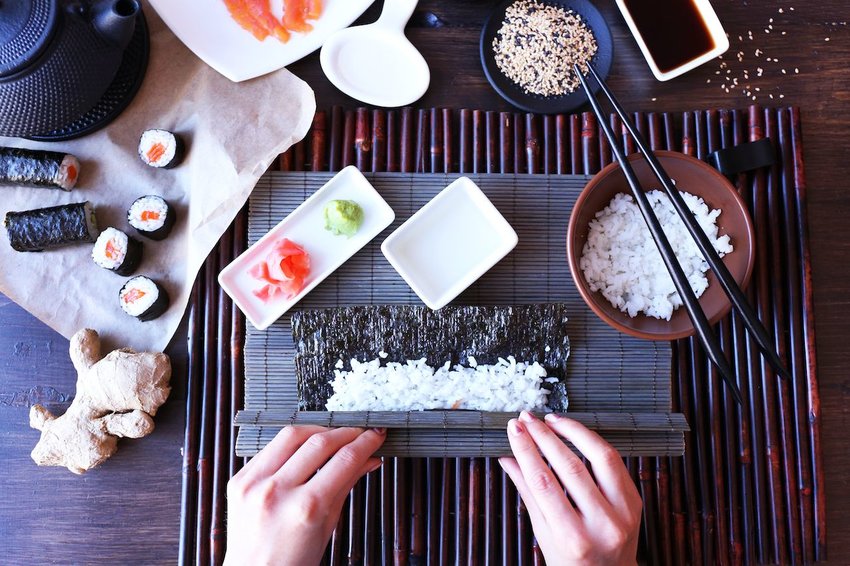
Rice Cooker
Getting just the right consistency and stickiness for your sushi rice can be a challenge, especially if you’re constantly babysitting it on the stove. A dedicated rice cooker ensures uniform texture and prevents the rice from burning, and because you can just toss in the rice and cook it at the flip of a switch, you’re left with extra time to prep your fish and vegetables. If the rice is done early, you can leave it in there to keep warm until you’re ready to use it. I like this mini rice cooker for its portability and multifunctionality. It’s so easy to transport, in fact, that I often take it with me to make some hot soup or oatmeal when camping in an RV.
Hangiri
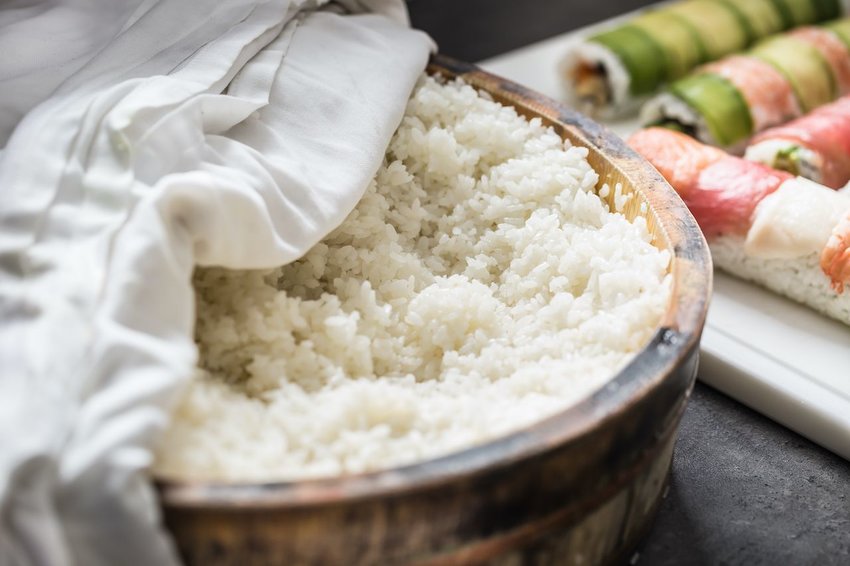
Made from Japanese cypress trees, a hangiri is a shallow bowl traditionally used to season the rice after it’s cooked. The wooden flat bottom of this rice bowl helps absorb any excess moisture of the rice while it cools. This hangiri starter set has everything you need, including rolling mats and paddles.
Bamboo Rice Paddle
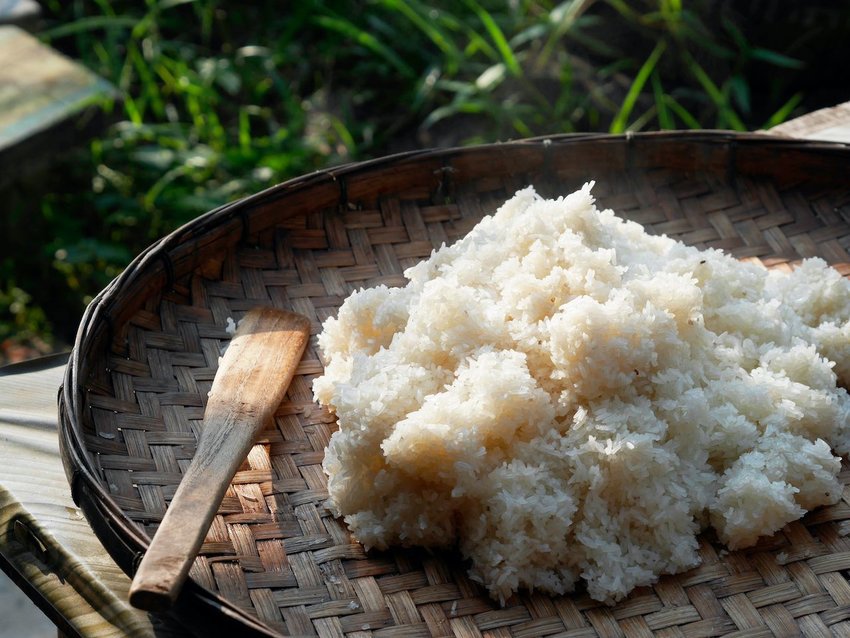
A bamboo rice paddle is ideal for transferring rice between the rice cooker and the hangiri, and for coating the sushi rice in vinegar. Avoid the use of metal utensils as it can react with the rice vinegar and can impart a metallic flavor to the rice. A bamboo paddle also prevents damaging the delicate non-stick coating of a rice cooker.
Sushi Knife
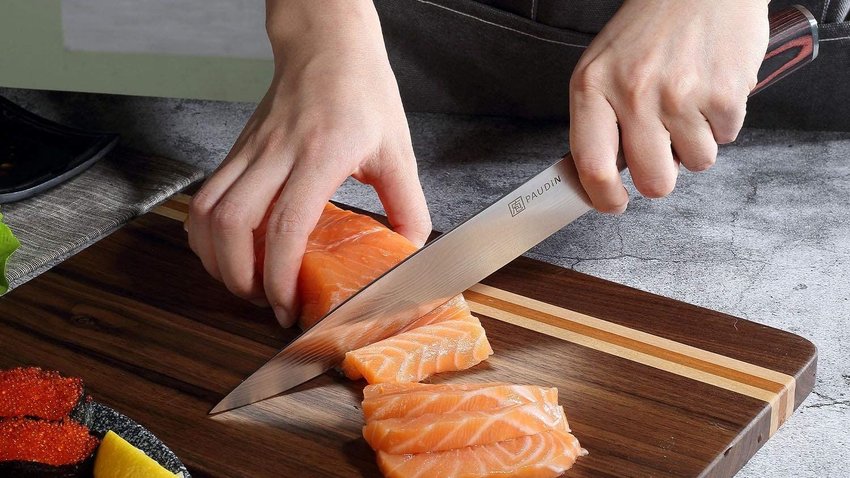
Unless you’re a diehard sashimi lover, a general sushi knife can take care of slicing the fish, vegetables, and sushi. Used in favor of a serrated knife, the thin, sharp blade of a sushi knife prevents tearing the flesh of the fish and damaging the shape of the sushi. Slice the fish by sinking the sushi knife into the sashimi at the heel of the blade, and work the knife to its tip in a pulling motion, cutting against the grain of the fish. This carving knife by Paudin is my go-to because it takes care of all of the chopping, eliminating the need to switch between different types of knives. Plus, its sleek and ergonomic design makes it easy to use, and its razor sharp blade allows for smooth cutting.
Bamboo Rolling Mat
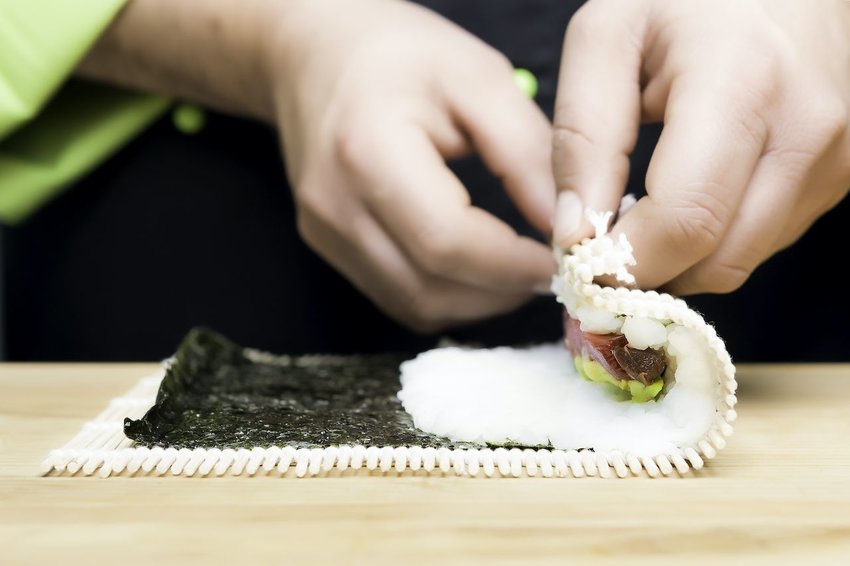
These wooden mats help shape your sushi and keep your ingredients tightly rolled. This set comes with a spreader to help you evenly coat the seaweed with rice.\
Choose the Right Seaweed
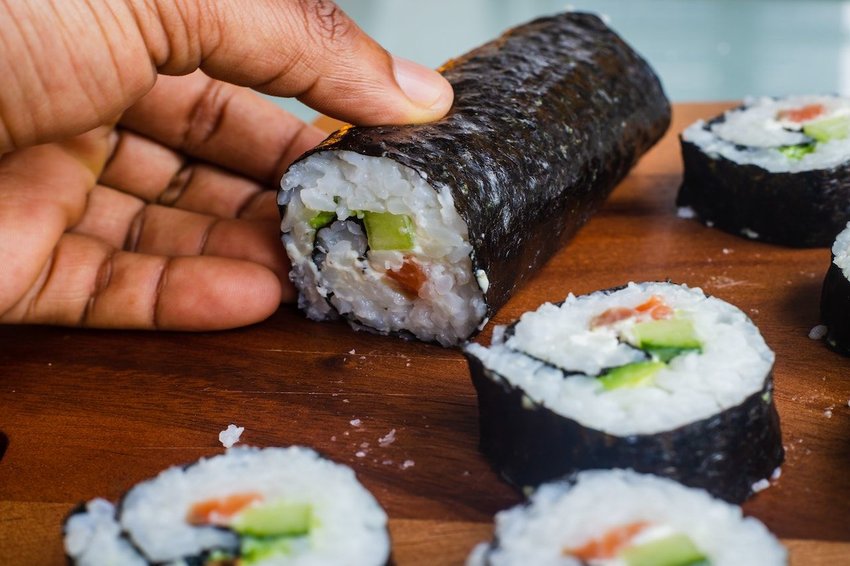
Pick up the seaweed specifically labeled for sushi making, as the snacking type can be too thin and flimsy, and unable to hold your ingredients. Seal any leftovers in a Ziploc bag for maximum freshness, or shred them up and sprinkle over a bowl of rice or miso soup as topping.
Splash Out for the Good Fish
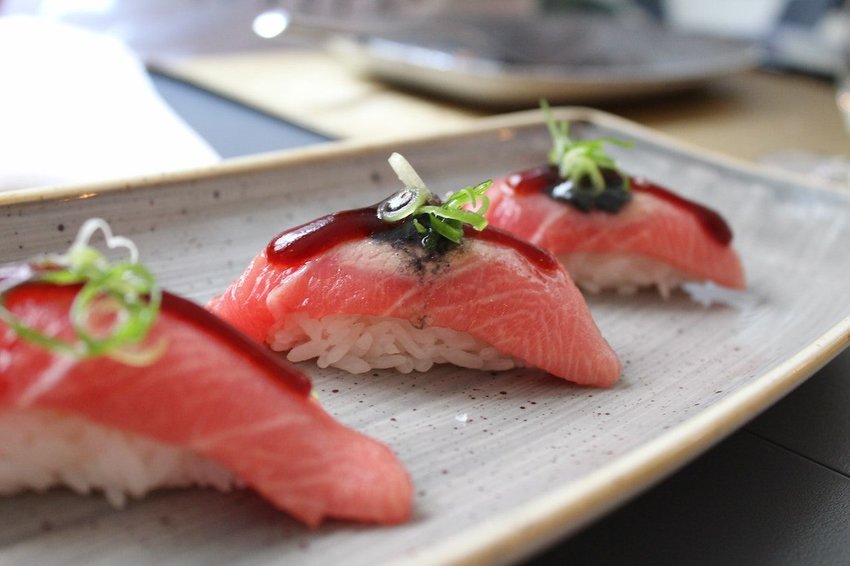
Locating quality fish will be no problem if you live on the coast, and even though sushi grade sashimi can be fairly pricey, using the proper grade guarantees its safety and taste. Sushi grade refers to fish that are caught quickly and frozen thoroughly to ensure that they’re free of parasites and any large crystals that can impact the texture of the fish. Choose filets that are bright instead of dull or dark, and firm instead of mushy to ensure its freshness. Sushi grade fish can generally be found at Whole Foods and Asian markets, but if you don’t have access to sushi grade sashimi, you can always opt for some imitation crab meat and a combination of your favorite vegetables.
Perfect the Rice
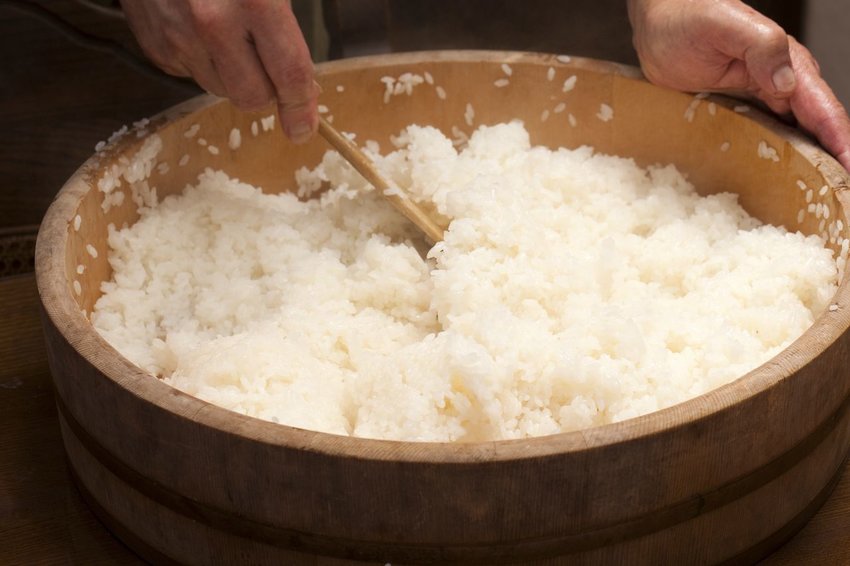
Sushi rice is a short grain that achieves a sticky texture when cooked due to its starch content. Before putting it in the rice cooker, sushi rice must be rinsed with cold water until it runs clear. Once it’s cooked and transferred to the hangiri, season it with a rice vinegar blend, made from dissolving sugar and salt in rice vinegar over low heat. To make sure the seasoning is evenly distributed and that each grain is coated, work slowly by sprinkling small amounts of the vinegar blend over the rice, using the bamboo paddle to gently fold in the mixture to keep the kernels intact. The rice is sushi ready when it’s just above room temperature, as spreading hot rice on seaweed will make your rolls soggy.
Wrap and Roll
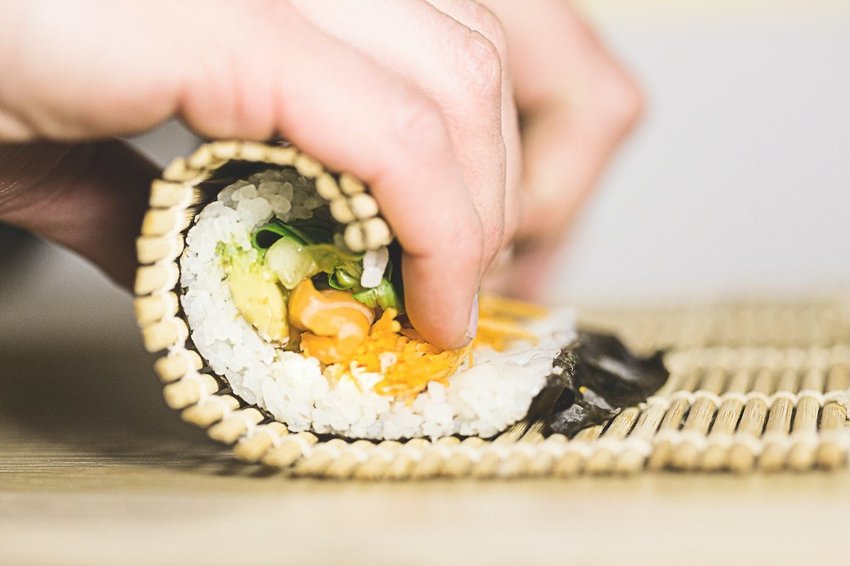
Practice rolling outside-in (meaning the rice if on the outside of the seaweed wrapper) maki rolls, handrolls, or the ever popular inside-out California roll style. Working with sushi rice can be a sticky situation, so place a bowl of water with a couple tablespoons of vinegar at your workstation, and dip your hands in before assembling your sushi to keep the rice from sticking to them. Spread a thin layer of rice over the seaweed, and place ingredients on the bottom ¾ of it. Roll tightly.
Accompaniments and How to Eat
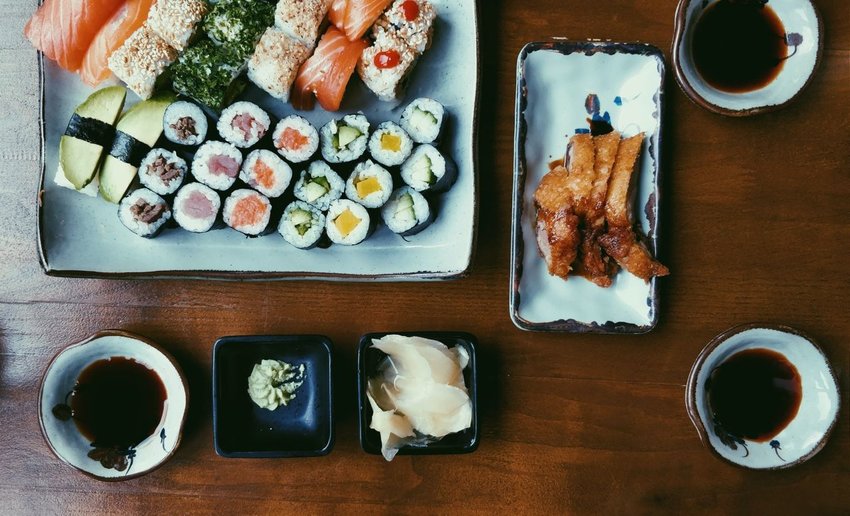
At home, nobody’s judging, so it’s perfectly okay to eat sushi rolls with your hands, as it helps to keep the shape of the food. But chopsticks are required if you’re eating sashimi. Serve your rolls with soy sauce, wasabi, and a side of pickled ginger. Pickled ginger is used as a palate cleanser, and is often had between sushi bites if you’re sampling different rolls. These accompaniments should be used sparingly to complement the flavors of your sushi, so avoid dunking your creations in soy sauce or using more than a dab of wasabi on each piece.
Photo: Louis Hansel @shotsoflouis/Unsplash





